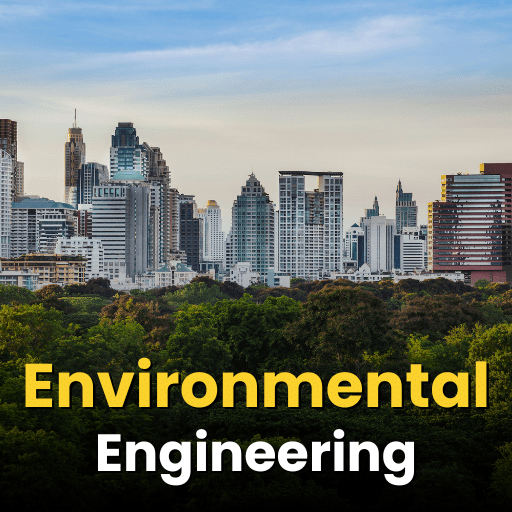Plastic Waste Management - 2 | Environmental Engineering - Civil Engineering (CE) PDF Download
WAYS TO REDUCE THE IMPACTS OF PLASTICS WASTES
Source Reduction: There are number of ways of achieving source reduction.
Examples include:
- Modify design of product or package to decrease the amount of material used.
- Utilize economies of scale with larger size packages.
- Utilize economies of scale with product concentrates.
- Make material more durable so that it may be reused.
- Substitute away from toxic constituents in products or packaging. Potential plastic markets that may be considered for source reduction include packaging, building and construction, consumer products, electrical and electronic, furniture and furnishings, transportation, adhesives, inks, and coatings.
Recycling: India ranks highest in terms of plastic recycling percentage (60%) in the world, whereas the world average is only 20% [1]. Recycling methods could be classified by following types
- Primary Recycling: Melting, molding and solidification.
- Secondary recycling: Melting and extrusion or injection.
- Tertiary Recycling: Physical and chemical methods that include thermolysis (pyrolysis, catalytic cracking, hydro cracking, etc.) and depolymerisation (alcoholysis, hydrolysis, acidolysis, aminolysis, etc.).
- Quaternary Recycling: Incineration with energy recovery
Phases of Plastic Recycling: Recycling plastics from MSW encompass four phases of activity collection, separation, processing/manufacturing and marketing .
Collection: Collection of plastics involves formal (municipal) sector and informal sector comprising of wastepickers, kabariwala, scrap dealers and bulk buyers. The municipality derives its funds for waste management either through funds designated by the Central Government and funds derived from property taxes.
Separation: It involves both formal and informal sector. Plastics segregated from MSW include a variety of resins. It is not necessary to separate plastics by resin type to allow their recycling, but separation by resin allows the production of the highest-quality recycled products.
There are many problems for the plastic recycling industry in India. The supply of recovered plastic is rather volatile due to the decrease in the recovery rate year by year and the dependency on the fluctuating international market. Most plastic recycling enterprises are small and medium sized factories with obsolete equipment and technologies. Financial limitations are a constraint to the technical improvements needed to satisfy market demand. Plastic cannot be recycled indefinitely. In continuous recycling, plastic becomes too contaminated and degraded for use as a secondary material. Secondary pollution occurs during the recycling process. Some factories cannot afford to install pollution control facilities and must therefore discontinue production .
DEGRADABLE PLASTICS
Bioplastics are biodegradable plastics, whose components are derived from renewable raw materials. These plastics can be made from abundant agricultural/animal resources like cellulose, starch, collagen, casein, soy protein polyesters and triglycerides .
Large scale use of these would help in preserving non-renewable resources like petroleum, natural gas and coal and contribute little to the problems of waste management. Biodegradable plastics degrade over a period of time when exposed to sun and air .
Various types of plastic degradation processes and reasons for degradation are given in Table 2.
Table 5.3.1. Types of plastic degradation processes .
Photodegradation Degradation caused through the action of sunlight on the polymer Biodegradation Degradation that occurs through the action of microorganisms such as bacteria, yeast, fungi, and algae etc. Biodeterioration Degradation that occurs through the action of microorganisms such as beetles, slugs, etc. Autooxidation Degradation caused by chemical reactions with oxygen. Hydrolysis Degradation that occurs when water cleaves the backbone of a polymer, resulting in a decrease in molecular weight and a loss of physical properties Solubilization Dissolution of polymers that occurs when a water-soluble link is included in the polymer.* |
*Note: soluble polymers remain in polymeric form and do not actually “degrade.” They are included here because they are sometimes mentioned in the literature on degradable plastics.
Though the demand for biodegradable plastics is increasing, acceptance of biodegradable polymers is likely to depend on factors like
- Customer response to costs.
- Possible legislation by Governments.
- The achievement of total biodegradability.
Immediate application areas identified in India for biodegradable plastics are agricultural mulch, surgical implants, industrial packaging, wrapping, milk sachets, foodservice, personal care, pharmaceuticals, medical devices, recreational, etc. However, the legal framework for the 4 utilisation of biodegradable materials is still very unclear. Within waste management, local authorities in many parts of the world including India don’t treat bioplastics as compostable material .
ADDITIONAL EFFORTS TO MITIGATE IMPACTS OF PLASTIC WASTE
- Environmental tax on plastic bags.
- Incineration with energy recovery.
- Landfilling, this will still be needed for disposal of plastic and other wastes.
- Reorganization of the recycling sector.
- Extended producer responsibility .
- Increasing educational initiatives. Some of the potential strategies for minimization of plastic wastes and the effect on plastic pollution are given in following table:
Table 5.3.2. Plastic waste management strategies and its relationship to plastic waste pollution.
| Potential strategies | Intended effect on plastic pollution |
| Source reduction | Reduces gross discards and toxicity of certain additives in plastic wastes |
| Recycling | Reduces net discards of plastics. |
| Degradable p lastics | Reduces long-term impacts of improperly discarded plastics |
| Control of urban runoff and sewers | Reduces release of plastic floatable wastes generated from land sources |
| Control of emissions from incineration with energy recovery | Reduces emissions |
| Control of leachate from landfills | Prevents contamination of groundwater Prevents contamination of groundwater |
|
14 videos|99 docs|98 tests
|
FAQs on Plastic Waste Management - 2 - Environmental Engineering - Civil Engineering (CE)
| 1. What is plastic waste management? |  |
| 2. Why is plastic waste management important? |  |
| 3. How can plastic waste be effectively managed? |  |
| 4. What are the challenges in plastic waste management? |  |
| 5. What are the benefits of effective plastic waste management? |  |



























